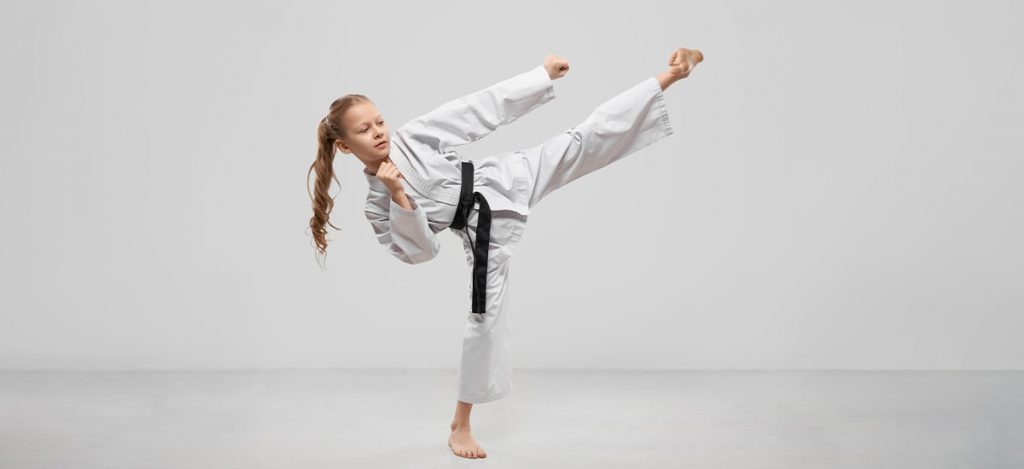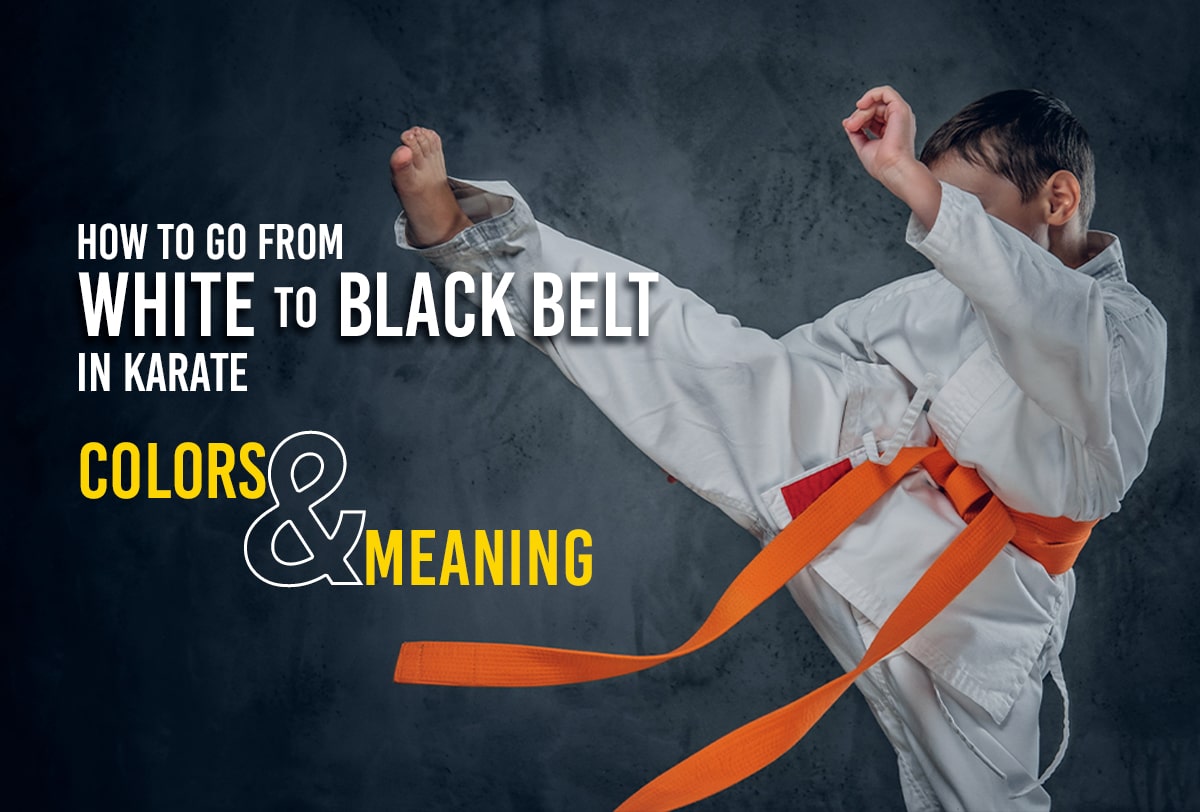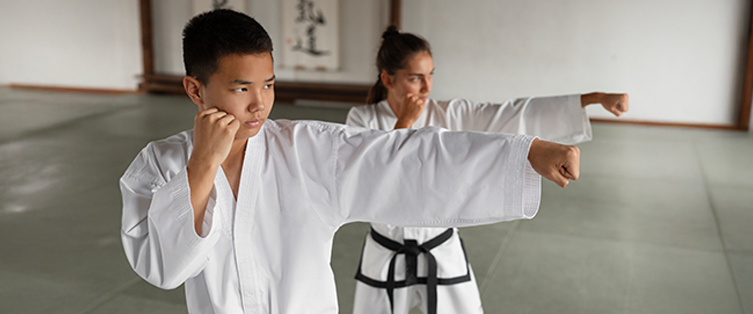If you want to learn karate, you may be curious about the belt ranking system and how to advance from white to black belt. Let us go over the fundamentals of the karate belt system and what each color symbolizes.
The karate belt system is a method of indicating a karate practitioner’s degree of skill and knowledge. It also serves as a means of motivating and rewarding students for their hard work and devotion.
Variations in Karate Belt Ranking Systems
There is no official or universal karate belt ranking system, but many schools adhere to similar patterns and conventions. Most institutions, for example, use white as the first belt and black as the highest belt.
As intermediate colors, most schools use yellow, orange, green, blue, purple, brown, and red, though the order may differ. Some institutions only use white, brown, and black belts, whereas others use up to ten or more different colors. Some institutions also have separate belt systems for kids and adults.
Origin of the karate belt system
It can be traced back to the origins of karate rings, which were derived from judo. Judo was the first martial art to use colored belts to signify a practitioner’s level of skill and rank. Jigoro Kano, the founder of judo, devised this system in 1883 to motivate his students and demonstrate their success.
He began with two colors: white for novices and black for professionals. He later added additional colors to make intermediate ranks.
The karate belt system was inspired by the belt system of judo. However, various karate styles and schools adapted the method to their own criteria and preferences. Some people used more colors, and different shades, skipped some ranks, and used stripes or patches to designate sub-ranks. As a result, various belt colors and orders can be found in different karate schools today.
White Belt to Black Belt
The belt system differs according to the style and organization of karate, but some primary colors are used in many schools. They are white, yellow, orange, green, blue, and brown. Each color may also have one or more sub-levels, which are marked on the belt by stripes or tags. The black belt is the greatest rank, with the most degrees or dans.
Let’s have a look at a typical sequence of belt promotions through skill and experience.
White Belt
In karate, the white belt is the first and lowest level. It symbolizes a beginner who has just begun their martial arts journey. A white belt student is supposed to acquire the fundamental karate techniques, stances, and etiquette. They must also maintain a positive mindset and respect for their instructors or sensei and their fellow pupils.
Yellow Belt
In karate, the yellow belt is the second level. It symbolizes a student who has learned the fundamentals of karate and can demonstrate them with confidence and coordination.
A student with a yellow belt is expected to learn more complex techniques such as kicks, punches, blocks, and combinations. They should be able to perform a few katas or pre-arranged forms that mimic combat situations.
Orange Belt

The orange belt is the third karate level. It symbolizes a student who has increased their technique’s speed, power, and accuracy. Sweeps, throws, joint locks, and counters are among the more complex tactics taught to orange belt students. They will practice kumite, which are sparring routine that tests their reaction and timing.
Green Belt
The fourth level in karate is the green belt. It represents a student who has a strong foundation in karate and can implement their techniques successfully in a variety of situations.
A green belt student should learn more refined methods such as circular movements, varying angles, and changing rhythms. In addition, they must improve their kata and kumite abilities.
Blue Belt
Blue belt is the fifth karate level. It symbolizes a student who has attained a high level of proficiency and can show their abilities with grace and fluidity. Blue-belt students are expected to acquire more advanced techniques. They should also improve their kata and kumite abilities by being more creative and varied.
Brown Belt
The brown belt symbolizes a karate student who has progressed to an advanced level and can perform their skills with excellence and precision.
Brown belt students are expected to master the most complex techniques, such as numerous attacks, weapon defenses, and vital point strikes. They must also improve their kata and kumite abilities with increased speed and intensity.
Black Belt

The black belt is the highest rank in karate. It represents a student who has mastered the art of karate and can teach it to others. A black belt student is expected to have a thorough grasp of karate philosophy, history, and culture.
They must also have a strong character, spirit, and discipline that represent values. Depending on the school of karate they practice, a black belt student can advance through 10 degrees or dans, each requiring more years of training and experience.
The belt ranking system discussed here may not be identical to the one in the school you choose. The karate belt ranking system is meant to measure and recognize your progress, but each school may have its way of doing that at different levels.
The karate belt system is not only a way of measuring one’s skill level but also one’s personal growth and development. As one progresses from white to black belt, they learn not only how to fight but also how to live. It is more than just a sport or a hobby; it is a way of life that teaches respect, humility, courage, perseverance, and harmony.
If you are interested in learning karate or advancing your level, you can find a karate class in Dubai that suits your needs and goals on Pursueit. Pursueit offers a variety of classes for all skill levels and ages, as well as other martial arts classes such as kung fu classes, taekwondo classes, kickboxing classes, and more.
You can browse through the classes and book them online with ease. Don’t miss this opportunity to pursue your passion and learn from the best instructors in Dubai. Visit pursueit.ae today and start your martial arts journey.







Leave a Reply